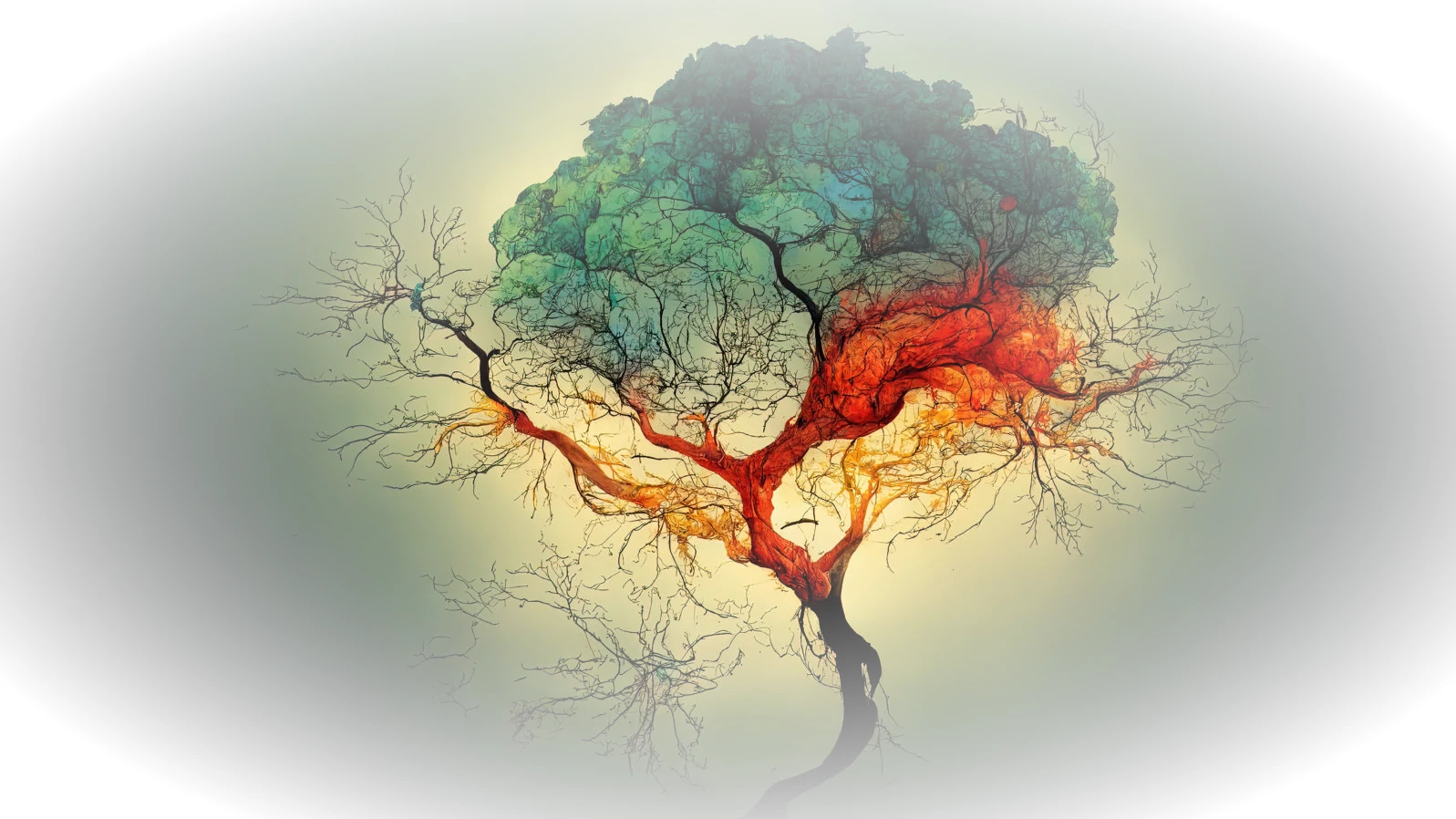Consciousness is one of those things that we think we know more about than we actually do. Experts agree that humans are conscious, but defining consciousness itself is a problem within the academic community.
Is a baby conscious ?
Is a 6 year old more or less conscious than an 90 year old Tibetan Monk ?
Are dogs conscious?
What makes something conscious?
Trees are living organisms that are capable of harvesting energy from the sun, growing taller than high rise buildings, and living hundreds of years. But are trees conscious ?
The tree of life symbol is an ancient metaphor that dates back thousands of years comparing the life cycle of a tree to that of human life. Does that mean our ancient ancestors understood something about trees that we still don’t understand today?
In this article we’ll explore expert perspectives, opinions, and the latest science in search of understanding where trees lie on the spectrum of consciousness.
How Do You Define Consciousness?
Consciousness is the most crucial component of our existence, but it’s also one of life’s biggest mysteries. Without consciousness, you would not be able to read these words – but exactly what is consciousness and how is it defined?

The Oxford Languages dictionary defines consciousness as “the state of being aware of and responsive to one’s surroundings”, whilst Wikipedia defines consciousness as “the sentience or awareness of internal and external existence”.
Both definitions include awareness as a critical part of consciousness.
While trees seemingly are not as aware as humans are, trees are most certainly more aware than, lets say, a rock for example.
If measuring consciousness depends on awareness, then it’s important to distinguish between the two types of awareness.
Types of Awareness
- Outside Awareness – General awareness is defined as being alert and conscious of your environment and fully understanding what is happening all around you.
- Self-Awareness – Self-Awareness is defined as your ability to, not only be conscious of your environment, but also conscious of your purpose and effect on others within your environment.
While trees has some degree of outside awareness as they react to their environment, the level of self-awareness is highly debated.
Defining consciousness is problematic for researchers because it encompasses so many variables.
Is consciousness just a matter of awareness or does intelligence also play a part in consciousness?
Intelligent consciousness is even harder to define, as there are at least 70 different definitions of intelligence according to research by Legg & Hutter.
What Makes Humans Conscious Also Make Trees Conscious
Before assessing whether or not a plant could have consciousness, we should take a look at the similarities between ourselves and plants.
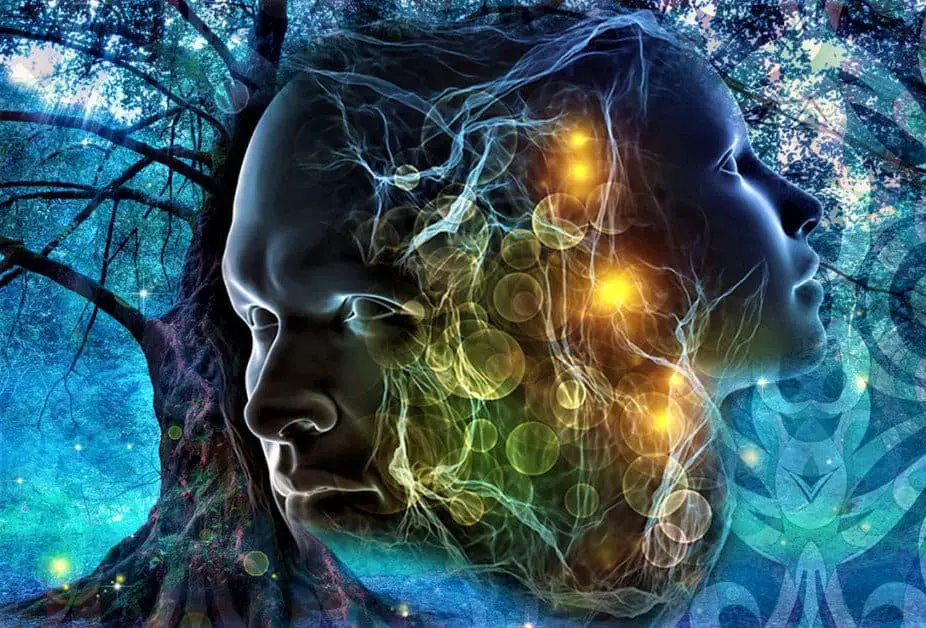
Physical Similarities: Humans vs. Trees
Plants have many physical similarities to both humans and animals.
- They are alive
- They breathe.
- They are either Male or Female (& some are non-binary)
- Their roots serve as animal-like nerve centers.
- They communicate with chemical compounds and by detecting scent.
- They may even feel pain.
- They grow in a Fractal Pattern proportion, just like humans
Behavioral Similarities: Humans vs. Trees
They also behave in many ways that mimic basic animal behaviors.
- They require food and water to stay alive.
- They reproduce.
- They have a survival instinct (plants are known to be very territorial and often spread to kill their competition)
- They can adapt to their environment.
- They can communicate with chemical compounds
- They can share resources using the mycelium network with the aid of fungi mushrooms.
Mushrooms are known to attach their threads to tree roots and compose what is called a mycorrhizal network, which essentially connects plants to transfer resources like water, nitrogen, carbon, and other important minerals.
Evidence of Consciousness In Plants & Trees
Let’s take a look at some of the most compelling evidence of consciousness in plants & trees.
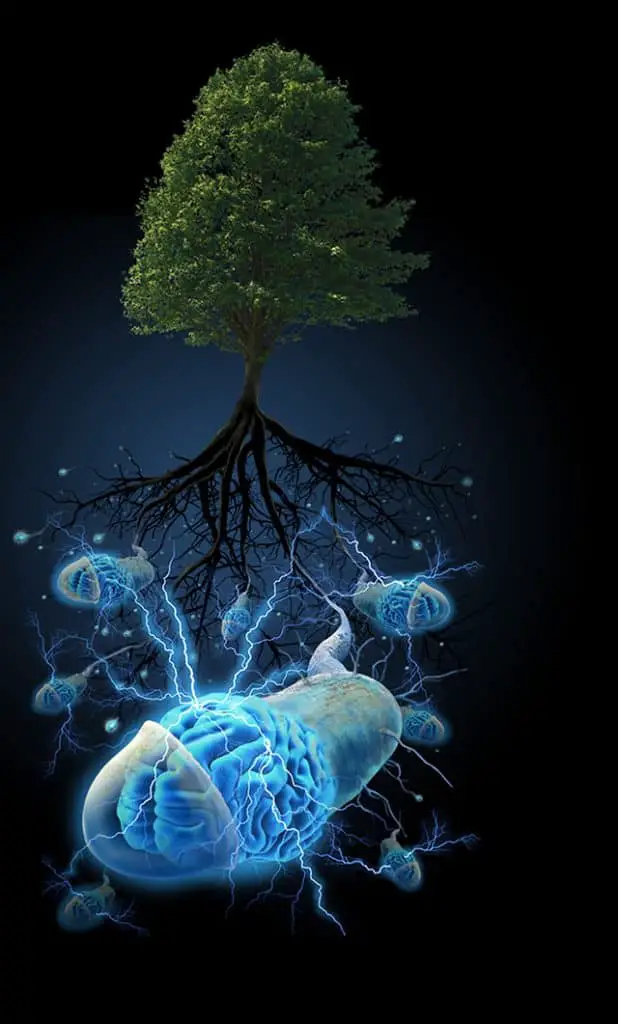
When it comes to trees specifically, there’s plenty of evidence to suggest some kind of consciousness. Leading Canadian ecologist Suzanne Simard has spent over 30 years studying trees, and her life’s work has led her to conclude that they are social beings that possess some intelligent and possibly even sentient characteristics.
Do Plants Feel Pain ?
A recent study by Tel Aviv University found that plants emit an ultrasonic “scream” when their stems are cut (or if they’re not watered enough) suggesting that they may feel some kind of physical pain. At the very least the study shows that plants are communicating ultrasonic signals of distress when they’re under conditions of stress.
Intelligence In Plants
Research by Professor Anthony Trewavas also suggests that plants possess at least three different definitions of intelligence.
In the words of Dr. Trewavas…
“A plant continually gathers and updates diverse information about its environment, integrates this with information on its present internal state, and then makes decisions that reconcile its well-being with its environment. “
Tree Communication
According to professor of forest ecology Dr. Suzanne Simard, trees are incredibly social and regularly communicate about their needs with the use of chemical transpiration and even send warnings to other trees about environmental threats like insect attacks.
In one study, Dr. Simard was able to watch as a Douglas Fir that had been injured by insects sent a detectable chemical warning signal to a ponderosa pine tree growing nearby.
Using the chemical information sent by the attacked Doug Fir Tree, the pine tree then produced a chemical defense enzymes to protect against the insects.
Incredible!
“This was a breakthrough.”
For the first time we were able to recognize that trees were communicating and sharing information to benefit the health of the forest as a whole.
Altruism in Trees
Besides warning other trees about potential threats, trees also help neighboring plants and young saplings by transferring nutrients to keep them alive. This suggests that if trees do possess consciousness, they may also have an altruistic nature.
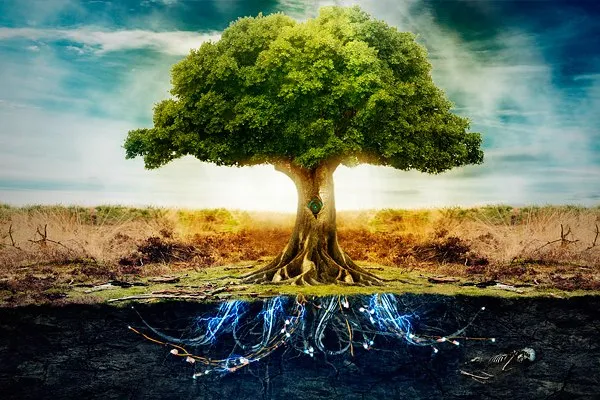
As we touched on earlier, trees are linked to neighboring trees by an underground network of fungi. This network is said to resemble the neural networks and brain cell connectivity in the human brain.
Older and more established trees are actually facilitating the growth of younger “understory seedlings”.
Research being conducted at the University of British Columbia has found that seedling trees will link into the mycelium and root network of the old trees to receive benefits from the older trees larger resource capacity.
Older trees also share carbon, other nutrients, and water to help the smaller seedlings establish themselves.
Not all Scientists Agree That Trees Are Conscious
Despite these interesting studies, some experts do not believe that trees or plants, in general, are capable of having consciousness.
Understanding that trees are alive, some believe that trees lack a brain, and thus lack the ability to identify as a “self”. Because Trees are not known to experience a unique existence and lack the ability to self identify and reflect, many see this as a missing piece of the conscious experience.
Skeptics argue that behaviors like communication and intelligence do not necessarily signify consciousness. Many more feel that since we do not yet fully understand consciousness in ourselves, how can we identify it in plants?
Final Thoughts: Are Trees Conscious?
While expert opinions vary, it does appear that there’s a lot more complexity to trees that most of us ever imagined.
There’s a lot more going on than just a log with leaves sitting in the sun all day.
Ultimately, since the origin and definition of consciousness has yet to be defined in humans, defining consciousness in trees is a fun, but subjective exercise.
It’s safe to say that consciousness seems to be an experience that hinges on one’s level of awareness. And awareness is a sliding scale (or spectrum). So it does seem possible that trees, although clearly not as aware or conscious as humans, may indeed exhibit baseline levels of consciousness and awareness.
It is not possible to know for sure how another living thing experiences life. Trees are living and even if their living awareness and experience is much different from the type of consciousness we know as humans, does it not still make them conscious ?
What do you think – can trees experience consciousness? We’d love to hear your opinion.
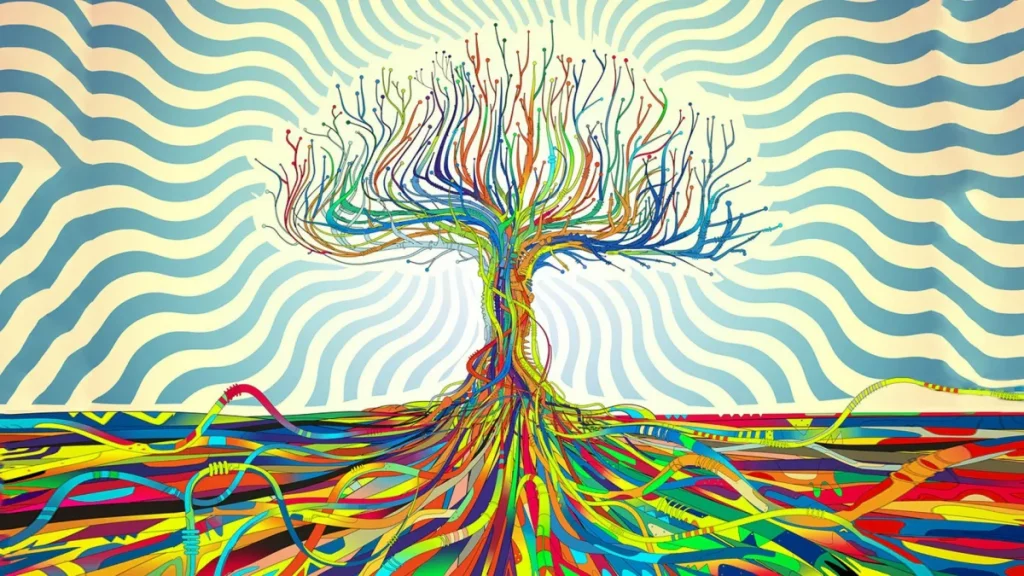
Loved what you read?
Hit that share button and let the world in on the secret – we’d be thrilled!
Got thoughts? We’re all ears for your feedback, corrections, or a good old chat. Don’t be shy; drop us a line.
And hey, don’t miss out on our curated list of must-reads in the recommended books section.
Big thanks for diving in with us today!


